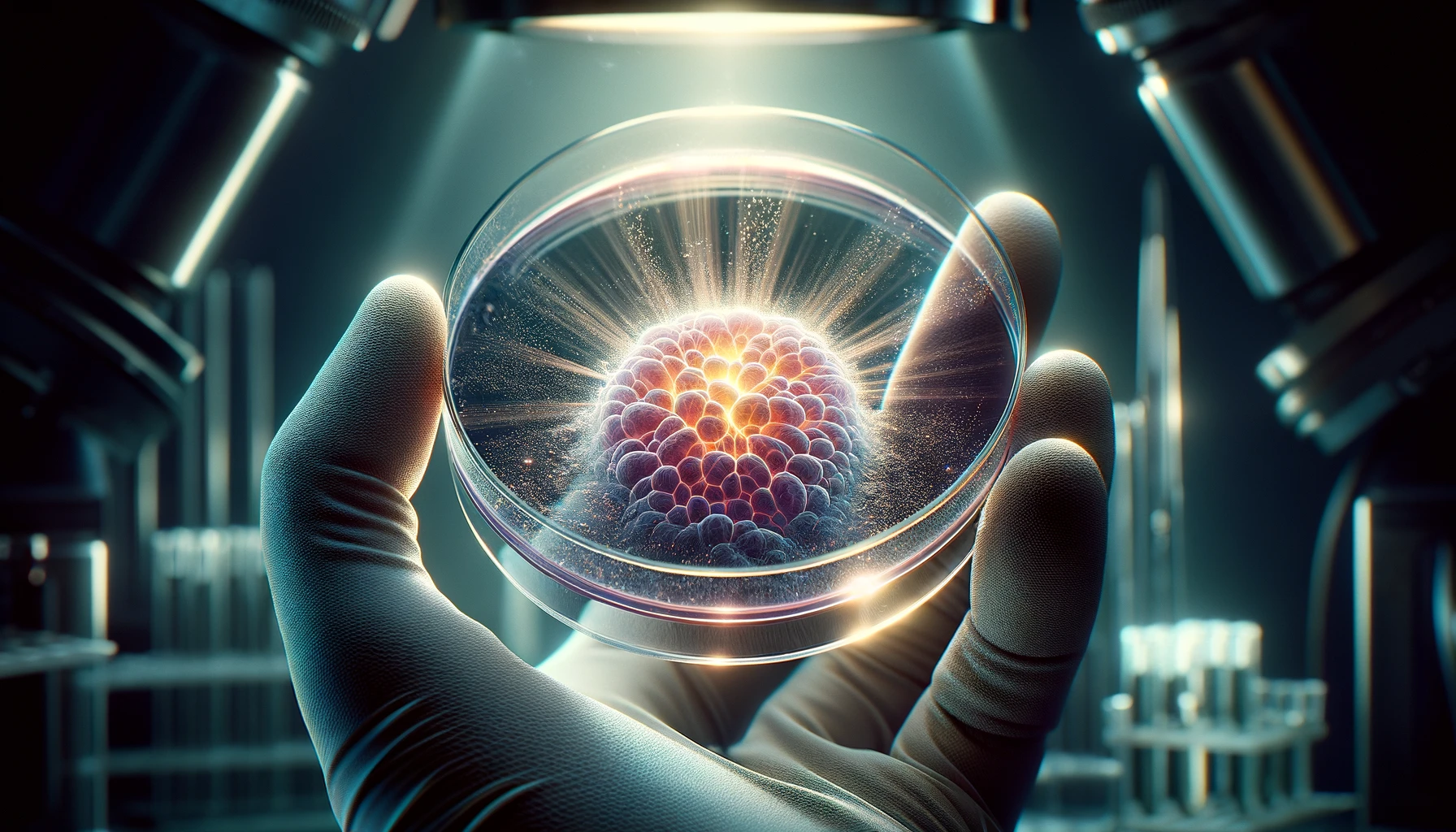Imagine scientists creating tiny versions of organs like lungs, kidneys, and intestines, not in a huge lab, but from the tiny cells floating around in the amniotic fluid inside a pregnant person’s belly. This isn’t a scene from a sci-fi movie; it’s real science happening now. These mini-organs, or organoids, give doctors a special sneak peek into how a baby is growing inside the womb, showing details that were almost impossible to see before.
Normally, doctors use ultrasounds to check on a baby’s development. While useful, ultrasounds have their limits. For example, they might show that a baby’s kidneys are smaller than usual, but they can’t explain why. Enter organoids. By growing a kidney organoid from cells in the amniotic fluid, doctors could potentially uncover the problem and even find ways to treat it. This is pretty exciting stuff!
But the uses for organoids go way beyond checking on babies. They’re on the verge of revolutionizing medicine and science in ways we’re just beginning to understand. Let’s explore some of the fascinating and sometimes surprising ways scientists are using organoids.
Speeding Up Drug Development
Creating new medicines is a long and costly process, with a 90% failure rate when drugs are tested in humans. Traditional tests use simple cell cultures or animal models, which aren’t always accurate predictors for how a drug will work in humans. Organoids, however, are mini-organs grown from human cells, and they offer a more complex and realistic model for testing drugs. One cancer researcher likened studying cells for organ function to trying to understand a house by looking at a pile of bricks. Organoids let scientists study the whole “house.”
Big pharmaceutical companies are starting to catch on. For example, in 2022, Roche, a giant in the pharma industry, hired organoid pioneer Hans Clevers to help integrate organoids into their drug development process at every step. Clevers believes that organoids could significantly enhance the way we develop new medicines.
Automating Organoid Growth
Growing organoids isn’t easy; it’s much more complex than growing standard cell lines. But some companies are developing technologies to automate this process. Vivodyne, a biotech company in Philadelphia, has created a robotic system that can grow 20 types of human tissue and test them with various drugs. This could provide an unprecedented amount of data, comparable to what could be gathered from a whole building full of lab mice, but without using actual animals.
Personalized Medicine
Organoids can be grown from cells of an individual, opening up possibilities for personalized medicine. For cancer patients, organoids can help determine the most effective treatment. For diseases like cystic fibrosis, where patients may respond differently to drugs based on their genetic makeup, organoids can help identify the best therapy.

Understanding Disease
Organoids are also helping scientists study how diseases affect the human body. During the Zika virus outbreak, researchers used brain organoids to study how the virus could cause birth defects. They’ve also grown noroviruses in organoids, which could lead to new treatments for stomach flu.
The Future: Brain Organoid Biocomputers
Perhaps the most futuristic application of organoids is in creating brain organoid biocomputers. These are early-stage experiments where brain cells in a dish have learned to play video games or process audio signals. The potential here is enormous but raises ethical questions about consciousness and rights if these biocomputers were to become more advanced.
Researchers have even implanted human brain organoids into rats, where they grew and started to integrate with the rat’s brain. This brings to mind debates about the nature of life and consciousness, reminiscent of the ethical dilemmas posed in Mary Shelley’s “Frankenstein.”
This article is based on the following article:
https://www.technologyreview.com/2024/03/08/1089612/the-many-uses-of-mini-organs/

Background Information
By understanding these concepts, the reader will have a solid foundation to grasp the significance of organoids in scientific research, medicine, and ethical debates. Organoids not only offer a glimpse into the future of personalized medicine and drug development but also pose new questions about the ethical implications of creating life-like models of human organs.
1. What is an Organoid?
An organoid is a tiny, three-dimensional structure grown in the lab that resembles an organ. It’s made from stem cells — special cells that can develop into many different types of cells in the body. Organoids can mimic the complexity of an organ more closely than traditional two-dimensional cell cultures.
2. Amniotic Fluid and Fetal Cells
Amniotic fluid is the protective liquid contained within the amniotic sac that surrounds and cushions a fetus during pregnancy. It contains fetal cells that have shed from the skin, lungs, and digestive system of the fetus. Researchers can extract these cells from the amniotic fluid to grow organoids.
3. Ultrasound Imaging
Ultrasound is a type of imaging that uses sound waves to create pictures of the inside of the body. It’s commonly used during pregnancy to check the fetus’s development. However, while ultrasounds can show physical abnormalities like organ size, they can’t provide detailed information about the organ’s cellular structure or function.
4. Stem Cells and Their Importance
Stem cells have the remarkable potential to develop into many different cell types in the body during early life and growth. They serve as a sort of internal repair system, dividing without limit to replenish other cells. Stem cells can be directed to become specific cells that can be used to regenerate and repair diseased or damaged tissues in people.
5. Drug Development Process
The process of developing new drugs involves several stages, including discovery and development, preclinical research (which can involve testing on animals), clinical trials (testing on humans), and finally, FDA approval before a drug becomes available to the public. This process is lengthy, costly, and has a high failure rate, particularly because drugs that seem promising in early-stage studies may not work well in humans.
6. Personalized Medicine
Personalized medicine is an approach to patient care that allows doctors to select treatments that are most likely to help patients based on a genetic understanding of their disease. This might involve genetic testing to determine the best medication or treatment protocol for an individual’s specific condition, which can lead to more effective and targeted therapy.
7. Ethics in Scientific Research
Ethical considerations in scientific research involve moral principles that guide studies, especially those involving human subjects or potential implications for human welfare. Topics like consent, privacy, the potential for harm, and the rights of subjects are critically important.

Suggested Debate/Essay Questions
- With the Development of Brain Organoid Biocomputers, at What Point Do We Need to Consider Rights and Protections for These Entities, Especially If They Exhibit Signs of Consciousness or Sentience?
- Does the Implantation of Human Brain Organoids into Animals Cross an Ethical Line, Potentially Blurring the Distinctions between Species and Raising Questions about the Nature of Consciousness?
- Who Owns the Organoids and the Genetic Information They Contain? Should Donors of Cells Used to Create Organoids Have Rights to, or a Say in, How Those Organoids Are Used or Any Profits They May Generate?
Please subscribe to Insight Fortnight, our biweekly newsletter!
